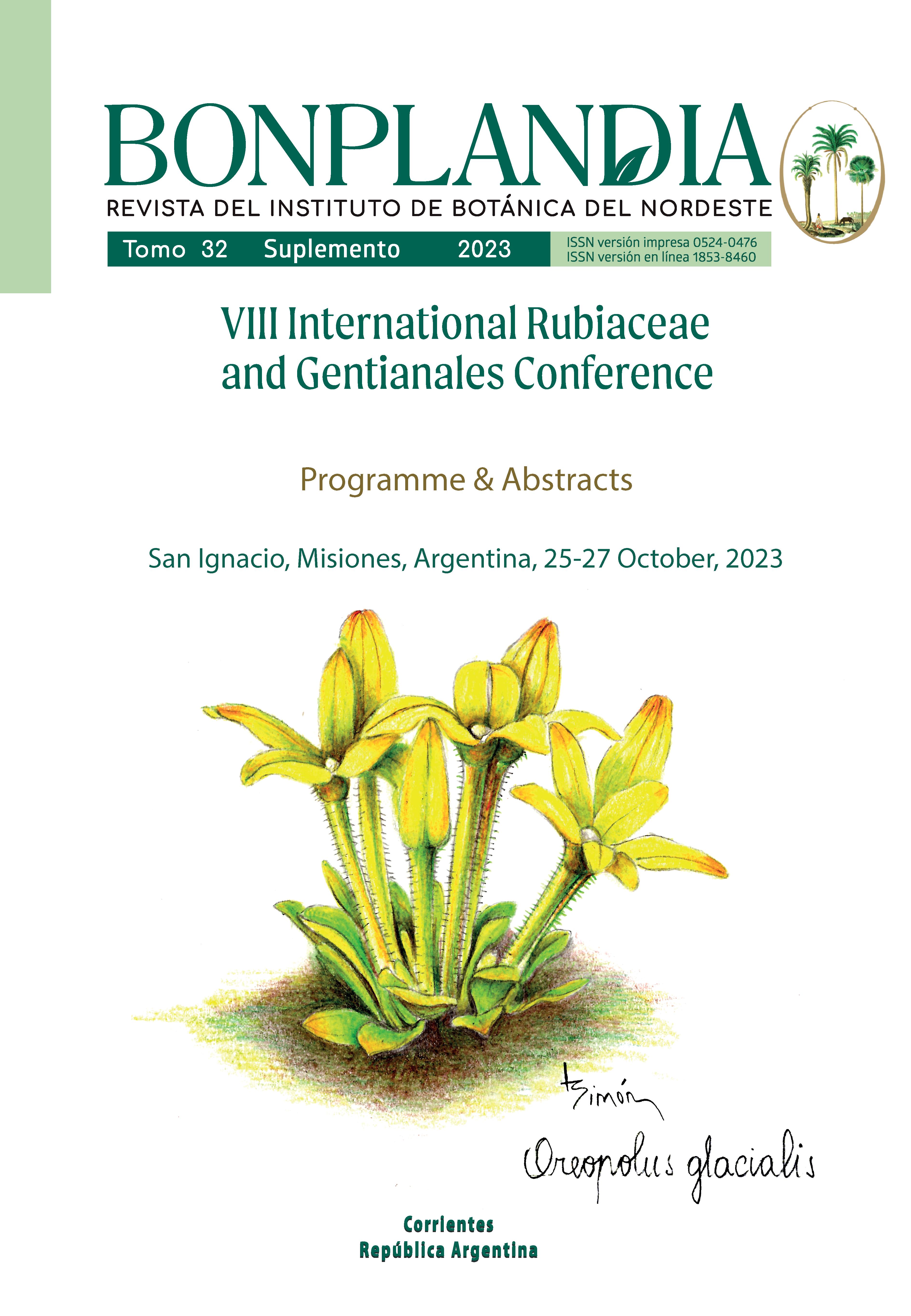Evolution and biogeography of the Pavetteae tribe
Resumen
With over 700 species, the Pavetteae are one o f the largest tribes in the subfamily Dialypetalanthoideae (formerly: Ixoroideae). Pavetteae representatives are characterized by a high morphological variation, especially regarding the reproductive characters (e.g., number of seeds per fruit, seed type and placentation). Representatives of the tribe occur throughout the Paleotropics in humid and dry vegetation types. In the Asian-Pacific región ca 300 species are currently described whereas on continental Africa and Madagascar (and Western Indian Ocean Islands) ca 350 and ca 80 species are present, respectively. Recently many new genera have been recognized among the Malagasy Pavetteae species (e.g. Tulearia). In addition, it is clear that within the paleotropical genus Tarenna there will be a split into different genera. Not only is the taxonomic history of the tribe rather complicated, also the biogeographical history and evolutionary patterns of the tribe remain understudied to date. Molecular phylogenetics combined with age inference methods, diversificaron analyses and ancestral area reconstruction clearly indicate that current diversity of the Pavetteae is the result of several dispersal events within the Paleotropical region. Moreover, several shifts in ecological preference have likely driven the evolutionary history within the Pavetteae.
Descargas
Descargas
Publicado
Cómo citar
Número
Sección
Licencia
Derechos de autor 2023 Bonplandia

Esta obra está bajo una licencia internacional Creative Commons Atribución 4.0.
Declaration of Adhesion to Open Access
- All contents of Bonplandia journal are available online, open to all and for free, before they are printed.
Copyright Notice
- Bonplandia magazine allows authors to retain their copyright without restrictions.
- The journal is under a Creative Commons Attribution 4.0 International license.











.jpg)


